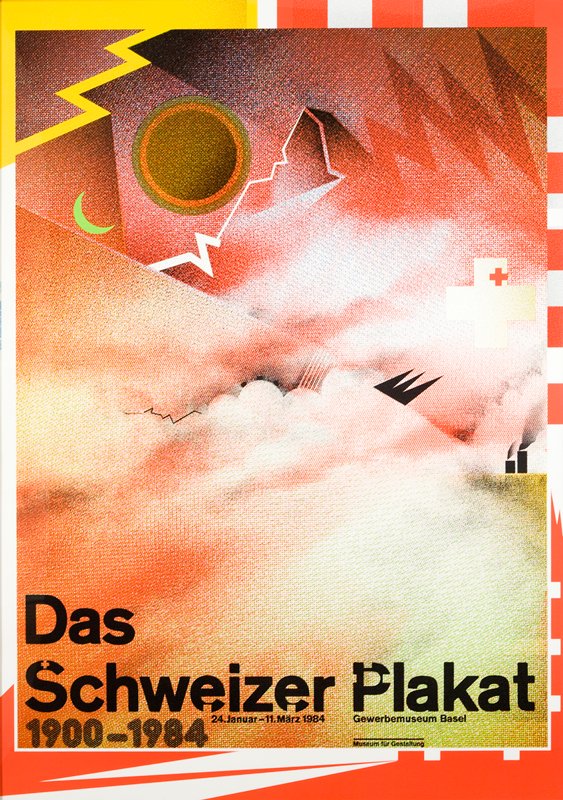You will be reading and annotating a text written by Katherine McCoy and David Frej “Typography as Discourse” 1988 found in our main text Graphic Design Theory: Readings From the Field by Helen Armstrong.
Questions
- Find 2 examples of the work of postmodern graphic designers from the 1980s.
- Deconstruct the work. Explain which visual elements are associated with postmoderism of the 1980s and why.
- What does the author mean by “Typography as discourse”?
- What does the author mean when she states that “…no longer are there one-way statements from designers. The layering of content, as opposed to New Wave’s formal layering of collage elements, is the key to this exchange. Objective communication is enhanced by deferred meanings, hidden stories, and alternative interpretations”

Wolfgang Weingart uses a new typographic style that rebels against old type.To organize the space, he used modulated patterns of overlapping shape and color that overlap. The shape of the Matterhorn alludes to the country of Switzerland. Elements such as multi-layered, skewed, stepped type, and other confusing patterns are associated with post modernism.
William Longhauser employs a decorative surface that is filled with vibrant, strong geometry as well as tangible representations of the elements. The graphic used as the backdrop for the poster. When the letter Michael is placed in a grid, it results in a pattern of repeating dots.
It is the author’s intention that the phrase “typography as discourse” serves as an invitation for postmodern designers to get involved in the world of design. Specifically, she is urging designers to make use of the textual form and produce design works that emphasize the letterform and magnify it in order to make copy text more expressive. In her opinion, expressive typography should take center stage and spur debate between artists and spectators about the meaning of and significance of the creation. That a designer can the freedom change typography in any way they want and should play around with those letters without the rules of modern type.
Design professionals, according to the author, “never longer make unilateral pronouncements.” The key to this interaction is the stacking of content, rather than the formal layering of collage pieces that were popular throughout the New Wave movement. The use of deferred meanings, concealed narratives, and alternate points of view all contribute to the success of objective communication. Designers are unable to make a single, general remark about their work. The usage of a new element of Postmodernism allows designers to experiment with the idea of having numerous meanings or interpretations in their work of art. Regarding a design, people can ask a variety of questions and receive a variety of responses.
Anottations





Recent Comments